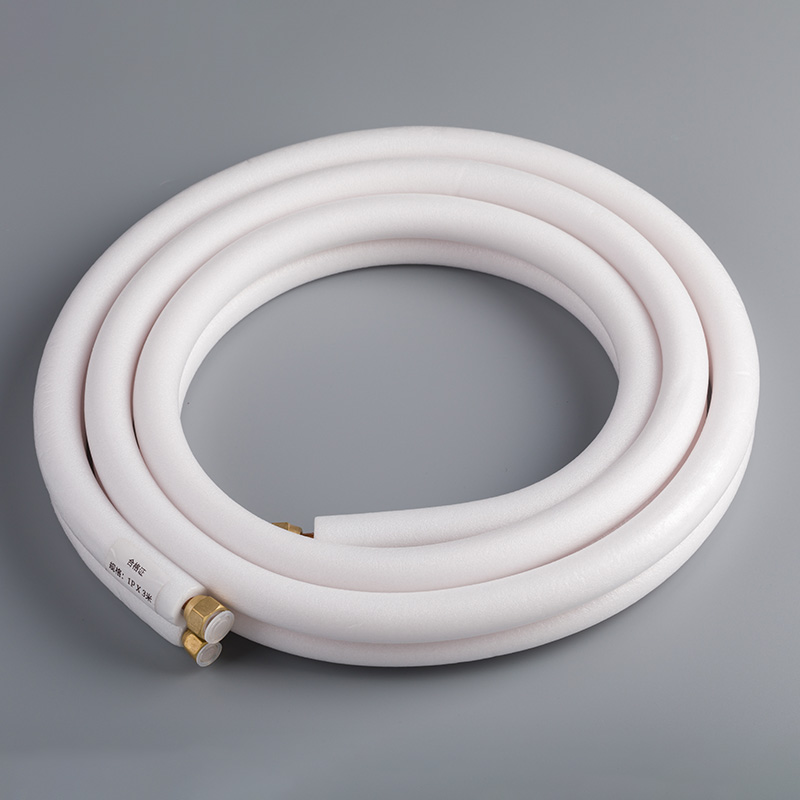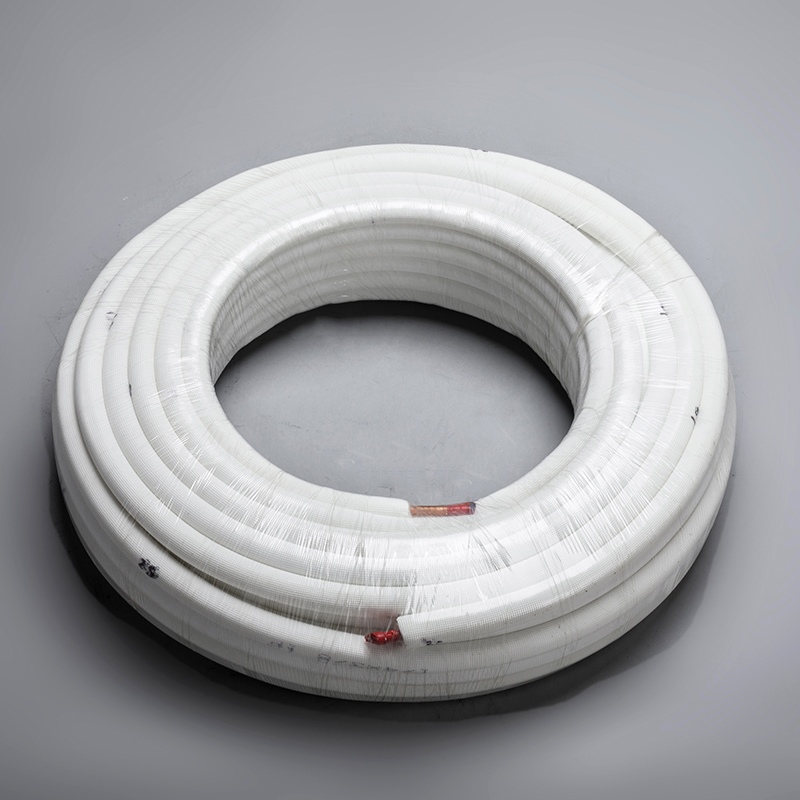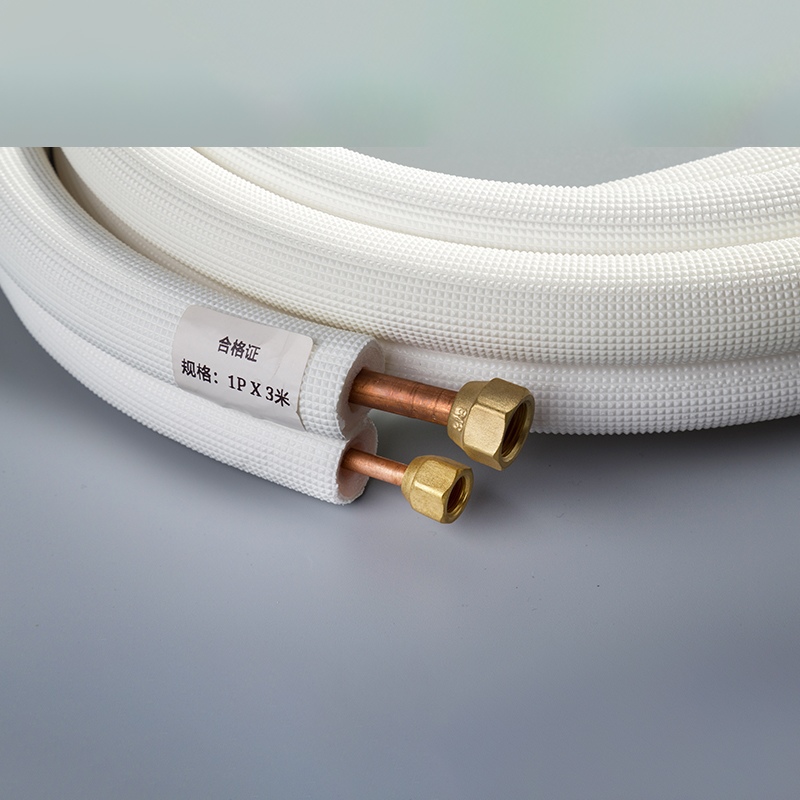Copper Pipe & Fittings: Which Type Works Best?

Copper pipe fittings play a crucial role in building reliable and long-lasting plumbing systems. These fittings offer unmatched durability, resistance to corrosion, and compatibility with various applications. You can rely on them for water supply, heating systems, and even gas lines. Their ability to handle high pressure and temperature makes them a preferred choice for professionals. Additionally, copper pipe & fittings provide an aesthetically pleasing finish, enhancing the overall appearance of your plumbing setup. Whether for residential or industrial use, their versatility ensures they meet your specific needs effectively.
Key Takeaways
Copper pipe fittings are durable and corrosion-resistant, making them ideal for long-lasting plumbing systems.
Choose the right type of copper pipe fitting (elbows, tees, couplings, etc.) based on your specific plumbing needs to ensure efficient fluid flow.
Compression and press fittings simplify installation, eliminating the need for soldering and saving time on projects.
Copper's natural resistance to bacteria makes it a safe choice for potable water systems, ensuring water quality.
Consider the compatibility of fittings with different copper pipe types (K, L, M) to avoid leaks and ensure secure connections.
Investing in high-quality copper fittings may have a higher upfront cost but leads to lower maintenance and repair costs over time.
Copper fittings are environmentally friendly as they are fully recyclable, supporting sustainable plumbing practices.
Overview of Copper Pipe & Fittings
What Are Copper Pipe Fittings?
Copper pipe fittings are essential components in any plumbing system.
One of the standout features of copper pipe fittings is their durability. Copper resists corrosion, which makes it ideal for long-term use in environments exposed to moisture. Additionally, copper fittings can handle high temperatures and pressures, making them suitable for both residential and industrial applications. Whether you're working on a small home project or a large-scale commercial system, these fittings provide reliability and performance.
Copper fittings also offer aesthetic benefits. Their sleek and polished appearance enhances the overall look of your plumbing setup. This makes them a popular choice for visible installations, such as exposed pipes in modern interior designs. With their proven track record, copper pipe fittings remain a trusted option for professionals and DIY enthusiasts alike.
Why Choose Copper Pipe Types for Plumbing?
Copper pipe types are widely regarded as one of the best materials for plumbing systems. They offer a combination of strength, flexibility, and resistance to wear and tear. When you choose copper pipes, you invest in a material that ensures long-lasting performance and minimal maintenance.
Copper works seamlessly with compression, press, and solder fittings, giving you multiple options for installation.
Another advantage of copper is its ability to resist bacteria growth. This makes it an excellent choice for potable water systems, where hygiene is a top priority. Additionally, copper's thermal conductivity ensures efficient heat transfer, which is particularly beneficial for heating systems and HVAC applications.
Copper pipe types also contribute to sustainability. Copper is fully recyclable, reducing its environmental impact. By choosing copper for your plumbing projects, you not only benefit from its performance but also support eco-friendly practices.
Different Types of Copper Pipe Fittings

Elbows
Elbows are essential components in plumbing systems. These fittings allow you to change the direction of fluid flow within a pipeline. Whether you need a 45-degree or 90-degree turn, elbows provide the flexibility to design efficient layouts. Their curved structure ensures smooth transitions, reducing the risk of pressure loss or turbulence in the system.
These fittings are compatible with various installation methods, including copper push fit fittings, end feed fittings, and solder ring fittings.
Tees
Tees are indispensable when you need to split or combine fluid flow in a plumbing system. These fittings feature a T-shaped design, allowing you to connect three pipes at once. You can use tees to create branch lines or merge multiple pipelines into a single flow. Their straightforward design simplifies complex plumbing configurations.
Tees are available in different sizes and materials, making them adaptable to various systems. For copper piping, you can choose from solder ring fittings, end feed fittings, or copper push fit fittings. Each option offers unique benefits. For instance, push fittings are quick to install, while solder fittings provide a secure and durable connection. Tees are ideal for water distribution, heating systems, and even gas lines, ensuring efficient performance in diverse applications.
Couplings
Couplings serve as connectors between two pipes of the same diameter. These fittings are crucial for extending pipelines or repairing damaged sections. If a pipe develops a leak or breaks, you can cut out the affected area and replace it with a coupling. This simple solution restores the integrity of your plumbing system without requiring extensive modifications.
Couplings come in various forms, including copper push fit fittings, end feed fittings, and solder ring fittings.
Adapters
Adapters are essential when you need to connect pipes of different sizes or types. These fittings allow you to transition between varying pipe diameters or materials, ensuring a seamless and secure connection. For example, if your plumbing system combines copper pipes with other materials like PVC or PEX, adapters make this integration possible without compromising performance.
You can find adapters in various forms, including male and female thread designs. These options provide flexibility for different installation needs. Copper press fittings are particularly effective when working with adapters. They offer a reliable and durable solution, especially in systems requiring high-pressure resistance. By using press technology, you can achieve a leak-free connection without the need for soldering or welding. This simplifies the installation process and reduces the time required for complex projects.
Adapters are versatile and suitable for both residential and industrial applications. Whether you're upgrading an existing system or designing a new one, these fittings ensure compatibility and efficiency. Their robust construction and corrosion resistance make them a long-lasting choice for any plumbing setup.
Caps and Plugs
Caps and plugs serve as essential components for sealing the ends of pipes. Caps close off the end of a pipe permanently, while plugs temporarily seal openings in fittings or pipelines. These fittings are crucial for preventing leaks, maintaining system pressure, and protecting unused pipe sections from debris or contamination.
Copper press fittings are an excellent choice for caps and plugs. Their durability and ease of installation make them ideal for both temporary and permanent solutions. With press technology, you can quickly secure caps or plugs without specialized tools. This method ensures a tight seal, even in high-pressure systems.
You might use caps and plugs in various scenarios, such as during system maintenance or when expanding a plumbing network. For instance, if you're planning future extensions, plugs can temporarily seal pipe openings until you're ready to connect additional fittings. Their adaptability and reliability make them indispensable in any plumbing toolkit.
Unions
Unions are vital for creating detachable connections in plumbing systems. Unlike couplings, which provide a permanent link, unions allow you to disassemble and reassemble pipes without cutting or damaging them. This feature makes unions ideal for systems requiring regular maintenance or modifications.
Copper press fittings enhance the functionality of unions by offering a secure and efficient connection method. The press mechanism ensures a leak-free joint while allowing for easy disassembly when needed. This combination of durability and convenience makes unions a preferred choice for both residential and industrial applications.
You can use unions in various settings, such as HVAC systems, water supply lines, or gas distribution networks. Their ability to withstand high pressure and temperature ensures reliable performance in demanding environments. By incorporating unions into your plumbing design, you gain flexibility and ease of access for future repairs or upgrades.
Flanges
Flanges play a critical role in plumbing systems by providing a secure and detachable connection between pipes, valves, or other components. These fittings are particularly useful in applications where frequent maintenance or inspection is required. You can use flanges to create a strong joint that can be easily disassembled without damaging the connected parts.
Flanges come in various designs, such as slip-on, threaded, and blind flanges, each serving specific purposes. Slip-on flanges slide over the pipe and are welded in place, offering a simple yet effective solution for many plumbing setups. Threaded flanges, on the other hand, screw onto the pipe, making them ideal for systems that need quick assembly and disassembly. Blind flanges seal off the end of a pipeline, ensuring no fluid escapes.
Copper flanges are highly durable and resistant to corrosion, making them suitable for both residential and industrial applications. Their robust construction allows them to withstand high pressure and temperature, ensuring reliable performance in demanding environments. When selecting flanges, consider the pipe material and application to ensure compatibility and efficiency. Copper press fittings often work well with flanges, providing a leak-free and long-lasting connection.
Compression Fittings
Compression fittings are a versatile and user-friendly option for connecting copper pipes. These fittings consist of three main components: a compression nut, a compression ring (also known as a ferrule), and a fitting body. When you tighten the nut, it compresses the ring against the pipe and fitting body, creating a watertight seal. This design eliminates the need for soldering or welding, making installation quick and straightforward.
You can use compression fittings in various applications, including plumbing, gas distribution, and HVAC systems. Their adaptability makes them an excellent choice for both new installations and repairs. For instance, if you need to connect pipes in tight spaces or areas where heat-based methods are impractical, compression fittings provide a reliable solution.
One of the key advantages of compression fittings is their compatibility with different pipe materials. You can seamlessly integrate them into systems that combine copper pipes with other materials like PVC or PEX. This flexibility simplifies system upgrades or modifications, ensuring a smooth transition without compromising performance.
Compression fittings are also known for their durability. They can withstand high pressure and temperature, making them suitable for demanding environments. However, it’s essential to ensure proper installation to avoid leaks. Always follow the manufacturer’s guidelines and use the appropriate tools to achieve a secure connection.
Factors to Consider When Choosing Copper Pipe Fittings
Compatibility with Copper Pipe Types
When selecting copper pipe fittings, compatibility with the pipe type is crucial. Copper pipes come in various forms, such as Type K, L, and M, each designed for specific applications. For example, Type K pipes, with their thick walls, are ideal for underground installations, while Type M pipes, being thinner, suit low-pressure systems like drainage. You must ensure that the fittings match the pipe type to create secure connections and avoid potential failure.
Certain fittings, like compression fittings, offer excellent compatibility with different copper pipe types.
Copper fittings also integrate seamlessly with other plumbing materials, such as PVC or PEX. This flexibility allows you to expand or modify existing systems without replacing entire sections. By choosing fittings that align with your pipe type and system requirements, you can achieve a reliable and efficient plumbing setup.
Durability and Resistance
Durability is a key factor when choosing copper pipe fittings. Copper fittings are renowned for their ability to withstand high pressure and temperature, making them suitable for both residential and industrial applications. Their resistance to corrosion ensures long-term performance, even in environments exposed to moisture or chemicals.
For enhanced durability, consider capillary fittings. These fittings create smooth, leak-proof joints that maintain their integrity over time. Similarly, copper press fittings offer robust construction, ensuring they can handle demanding conditions without failure. Their design eliminates weak points, providing a cost-effective option for long-lasting plumbing systems.
Corrosion resistance is another critical aspect. Copper fittings naturally resist rust and degradation, reducing the risk of leaks or system breakdowns. This feature makes them an excellent choice for potable water systems, where maintaining water quality is essential. By prioritizing durability and resistance, you can minimize maintenance needs and extend the lifespan of your plumbing system.
Cost and Budget
Cost plays a significant role in selecting copper pipe fittings. While copper fittings may have a higher upfront cost compared to other materials, their long-term benefits often outweigh the initial investment. Their durability and resistance to corrosion reduce the likelihood of repairs or replacements, making them a cost-effective option in the long run.
Different types of fittings cater to various budget levels. For instance, compression fittings are affordable and easy to install, saving both time and labor costs. On the other hand, copper press fittings may have a slightly higher price but offer unmatched ease of installation and reliability. These fittings eliminate the need for specialized tools or soldering, further reducing overall project costs.
When planning your budget, consider the specific requirements of your project. For small-scale repairs, simple fittings like caps or adapters may suffice. For larger installations, investing in high-quality fittings ensures better performance and fewer failures over time. Balancing cost with quality allows you to create a plumbing system that meets your needs without exceeding your budget.
Ease of Installation
Choosing copper pipe fittings that offer a quick and easy installation can save you time and effort, whether you're a professional plumber or a DIY enthusiast. Many modern fittings are designed to simplify the process, eliminating the need for complex tools or techniques.
Compression fittings are an excellent example of user-friendly options. These fittings use a brass ring compressed between a nut and the fitting body to create a watertight seal. You can install them without soldering or welding, making them ideal for projects where heat-based methods are impractical. Their straightforward design ensures that even beginners can achieve a secure connection with minimal effort.
Another popular choice is copper press fittings, which provide a quick and easy installation method. These fittings feature a unique mechanism that allows you to press them onto pipes using a specialized tool. This eliminates the need for soldering, reducing the time required for installation. Press fittings also ensure a strong and leak-proof connection, making them a reliable option for both residential and industrial applications.
For those seeking a more traditional approach, capillary fittings offer a neat and durable solution. These fittings create smooth and strong joints by using a small amount of solder to seal the connection. While this method requires some skill, it remains a trusted choice for long-lasting plumbing systems.
When working with copper pipes, you can also rely on adaptor fittings to connect different pipe sizes or materials. These fittings simplify the integration of copper pipes with other systems, such as PVC or PEX, ensuring compatibility without compromising performance. Their versatility makes them a valuable addition to any plumbing project.
To achieve the best results, always follow the manufacturer's guidelines during installation. Proper preparation, such as cleaning the pipe ends and ensuring a snug fit, enhances the durability and reliability of your connections. By selecting fittings designed for quick and easy installation, you can streamline your project and enjoy a hassle-free experience.
Recommendations for Common Scenarios

Residential Plumbing
For residential plumbing, copper pipe fittings provide unmatched reliability and efficiency. You can use them to create durable systems for water supply, heating, and even gas lines. Their corrosion resistance ensures long-term performance, even in areas with high moisture levels. Copper fittings also maintain water quality, making them ideal for potable water systems.
When working on residential projects, compression fittings are a practical choice. These fittings allow you to connect copper pipes without the need for soldering or welding. They use a brass ring compressed between a nut and the fitting body to create a watertight seal. This design simplifies installation, especially for DIY enthusiasts. Compression fittings are also cost-effective and compatible with various pipe types, ensuring a secure connection for your plumbing needs.
For more extensive installations, copper press fittings offer a faster and safer alternative. These fittings eliminate the need for open flames, reducing risks during installation. You can use a specialized tool to press the fitting onto the pipe, creating a strong and leak-free joint. This method saves time and ensures consistent results, making it a preferred option for professionals.
HVAC Systems
Copper pipe fittings play a vital role in HVAC systems, where efficient heat transfer and durability are essential. Copper's excellent thermal conductivity ensures optimal performance in heating and cooling applications. You can rely on these fittings to handle high pressures and temperatures, making them suitable for demanding environments.
In HVAC systems, compression fittings are a versatile option. They provide a secure and watertight connection without requiring heat-based methods. This feature is particularly useful in tight spaces or areas where using an open flame is impractical. Compression fittings also allow for easy disassembly, making maintenance and repairs more convenient.
For quicker installations, consider copper press fittings. These fittings streamline the process by eliminating the need for soldering. You can achieve a reliable connection in less time, which is crucial for large-scale HVAC projects. Press fittings also reduce the risk of leaks, ensuring the system operates efficiently over time.
Industrial Applications
In industrial settings, copper pipe fittings must withstand harsh conditions and heavy usage. You can depend on copper's durability and resistance to corrosion for long-lasting performance. These fittings are ideal for water distribution, gas lines, and other critical systems that require robust materials.
For industrial applications, compression fittings offer a practical solution. Their design ensures a secure connection, even under high pressure. You can use them to join copper pipes in systems that require frequent maintenance or modifications. Compression fittings are also compatible with various pipe sizes, providing flexibility for complex installations.
Copper press fittings are another excellent choice for industrial use. They provide a quick and efficient method for connecting pipes, reducing downtime during installation. These fittings create a strong and leak-proof joint, ensuring the system operates reliably. Their ability to handle extreme conditions makes them suitable for a wide range of industrial applications.
By selecting the right copper pipe fittings for your specific scenario, you can ensure a reliable and efficient plumbing system. Whether you're working on a residential project, an HVAC system, or an industrial setup, copper fittings offer the versatility and performance you need.
Choosing the right copper pipe & fittings is essential for building a reliable plumbing system. You should evaluate factors like application, compatibility, and durability to ensure the best results. Copper fittings stand out due to their corrosion resistance, long-term reliability, and ease of installation. Their versatility makes them suitable for residential, HVAC, and industrial applications. By understanding the different types of copper pipe & fittings, you can make informed decisions that save time, reduce costs, and enhance system performance.
FAQ
What makes copper pipe fittings a reliable choice for plumbing?
Copper pipe fittings stand out due to their durability, corrosion resistance, and ability to handle high pressure and temperature. They ensure long-lasting performance in both residential and industrial applications. Additionally, copper does not contaminate water, making it a safe option for potable water systems.
Are copper press fittings better than traditional fittings?
Yes, copper press fittings offer several advantages over traditional fittings. They are easy to install, saving you time and effort. These fittings eliminate the need for soldering, reducing installation risks. Their durability and leak-proof design make them a reliable and cost-effective choice for most plumbing needs.
Can copper fittings be used with other materials like PVC or PEX?
Yes, copper fittings can connect with other materials like PVC or PEX using adapters. These fittings ensure seamless integration without compromising the system's performance. You can use them to upgrade or modify existing plumbing setups efficiently.
How do I choose the right type of copper pipe for my project?
The choice depends on your specific application. Type K pipes, with their thick walls, are ideal for underground installations. Type L pipes work well for outdoor water service, while Type M pipes suit low-pressure systems like drainage. Matching the pipe type with the appropriate fittings ensures a secure and efficient connection.
Are copper fittings environmentally friendly?
Yes, copper fittings are fully recyclable, making them an eco-friendly option. By choosing copper, you contribute to sustainable practices while benefiting from its long-term reliability and performance.
Do copper fittings require special tools for installation?
Some types of copper fittings, like compression fittings, do not require special tools. You can install them with basic equipment. However, copper press fittings need a specialized pressing tool, which simplifies the process and ensures a secure connection.
Can I use copper fittings for high-temperature applications?
Yes, copper fittings are suitable for high-temperature applications. Their excellent thermal conductivity and resistance to heat make them ideal for heating systems and HVAC applications. They maintain their integrity even under demanding conditions.
What are the benefits of using copper press fittings?
Copper press fittings provide a quick and efficient installation method. They save time and reduce labor costs by eliminating the need for soldering. These fittings also offer exceptional durability, corrosion resistance, and suitability for high-pressure systems. Their ease of use makes them a preferred choice for professionals and DIY enthusiasts alike.
How do I maintain copper pipe fittings?
Copper pipe fittings require minimal maintenance. Regularly inspect them for signs of wear or leaks. Clean the fittings and pipes to prevent debris buildup. Their natural resistance to corrosion ensures they remain in good condition for years.
Are copper fittings cost-effective in the long run?
Yes, copper fittings are cost-effective due to their durability and low maintenance requirements. While the initial cost may be higher than other materials, their long lifespan and reliability reduce the need for frequent repairs or replacements, saving you money over time.
See Also
Explore Top Copper Pipe Fittings For Your Plumbing Needs
Become Proficient With Copper Pipe Fittings: A DIY Manual
The Definitive Resource For Quality Copper Pipe Fittings
A Thorough Guide To Mastering Copper Pipe Fittings
Complete Guide To Copper Pipe Varieties And Soldering Techniques


